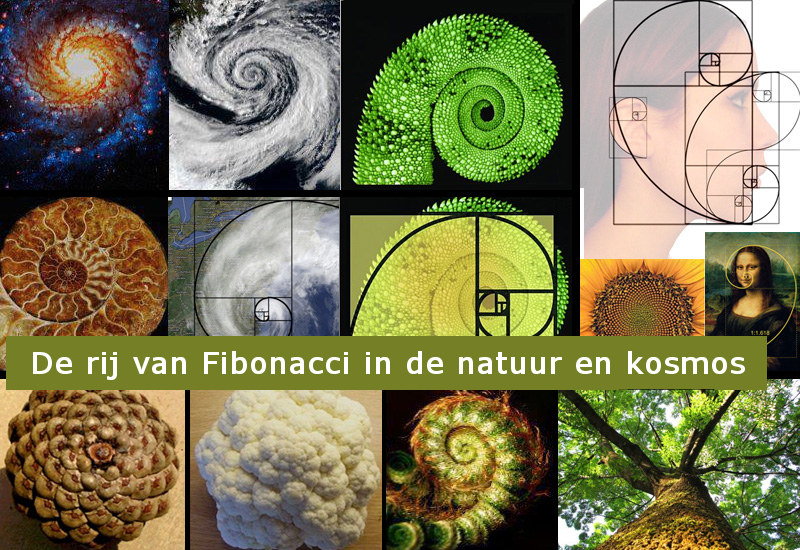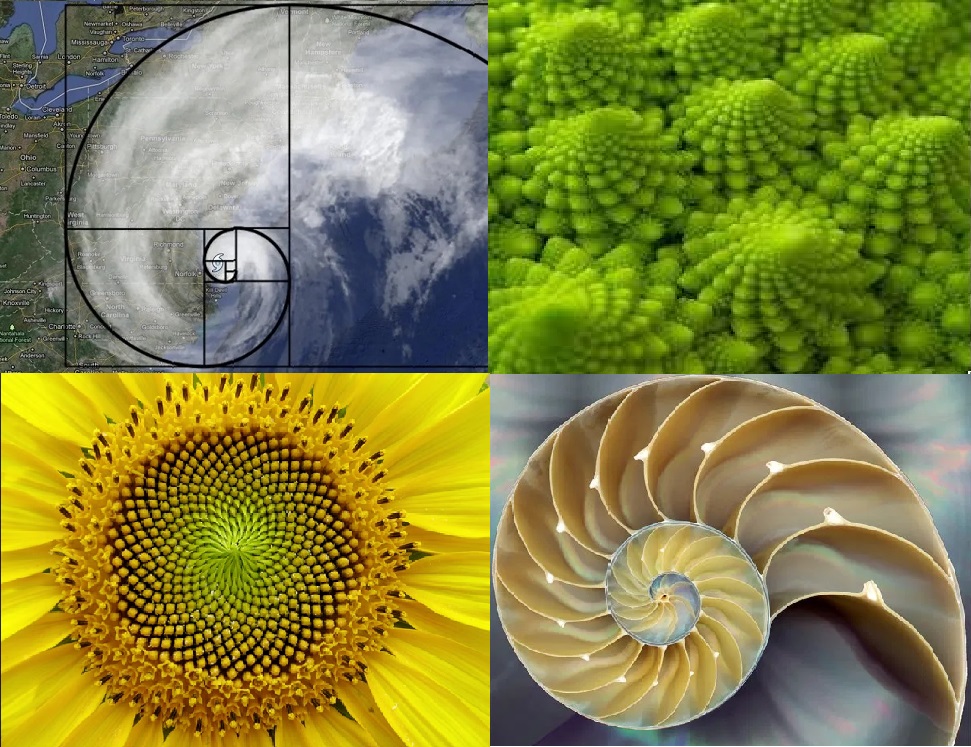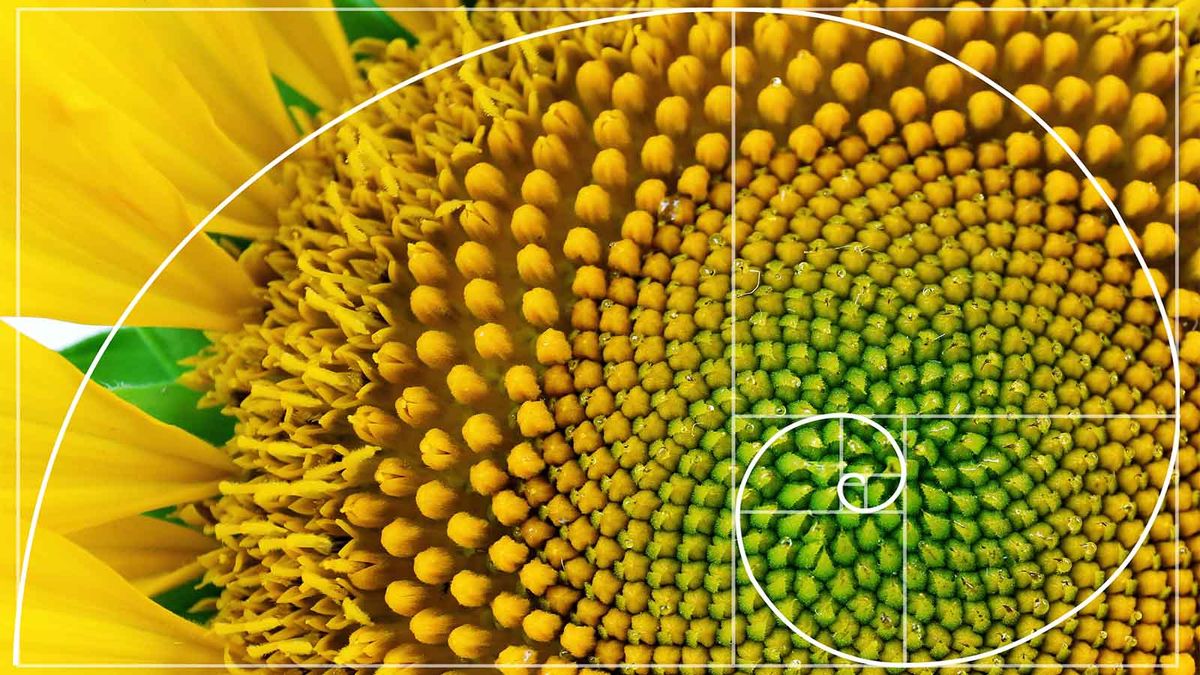
The fabulous Fibonacci sequence in nature Science Vibe
Xn+2 = Xn+1 + Xn. Basically, each integer is the sum of the preceding two numbers. (You can apply the concept to negative integers, but we're only going to cover the positive integers here.) To find 2, add the two numbers before it (1+1) To get 3, add the two numbers before it (1+2) This set of infinite sums is known as the Fibonacci series or.

Found on Bing from Fibonacci Sequence Math, Fibonacci Spiral Art, Alex
Geskiedenis Die Fibonacci-volgorde kry sy naam van 'n Italiaanse wiskundige wat in die Middeleeue gewoon het: Leonardo van Pisa, ook bekend as Fibonacci (1175-1250). Leonardo het sy kinderjare in Noord-Afrika deurgebring en deur die Middellandse See gereis, waar hy geleer het oor die Indo-Arabiese syferstelsel en daaroor verheug was.

Stock Illustration in 2020 Fibonacci sequence in nature, Fibonacci in nature, Fractals in nature
2 min. lezen Wiskunde en natuur komen samen als we tussen al het groen speuren naar de Rij van Fibonacci en die nog vinden ook! In zijn boek 'Liber Abaci' presenteerde

The Fibonacci Sequence in Nature • Insteading
Fibonacci (/ ˌ f ɪ b ə ˈ n ɑː tʃ i /; also US: / ˌ f iː b-/, Italian: [fiboˈnattʃi]; c. 1170 - c. 1240-50), also known as Leonardo Bonacci, Leonardo of Pisa, or Leonardo Bigollo Pisano ('Leonardo the Traveller from Pisa'), was an Italian mathematician from the Republic of Pisa, considered to be "the most talented Western mathematician of the Middle Ages".

7 Beautiful Examples Of The Fibonacci Sequence In Nature
Een jonge, Italiaanse man uit Pisa die graag reisde. Op een van zijn vele reizen raakte hij geïnspireerd door wiskunde en schreef het boek Liber Abaci. Dat boek werd erg belangrijk voor de rest van de geschiedenis van wiskunde. Fibonacci gebruikte het om Europa kennis te laten maken met het getallensysteem dat we nu gebruiken: 0 tot 9.

De rij van Fibonacci
71 Share 6.1K views 3 years ago GENT Wiskunde is niet enkel logisch, maar kan ook mooi zijn! De reeks of rij van Fibonacci is hier het perfecte bewijs voor! Overal in de natuur komen we.

Fibonacci_Sunflower Geometria naturaleza, Fractales en la naturaleza, Fractales
In mathematics, the Fibonacci numbers form a sequence defined recursively by: = {= = + > That is, after two starting values, each number is the sum of the two preceding numbers. The Fibonacci sequence has been studied extensively and generalized in many ways, for example, by starting with other numbers than 0 and 1, by adding more than two numbers to generate the next number, or by adding.

Pasquale Fuscaldo Fibonacci e la sezione aurea in natura
Fibonacci sequence, the sequence of numbers 1, 1, 2, 3, 5, 8, 13, 21,., each of which, after the second, is the sum of the two previous numbers; that is, the nth Fibonacci number F n = F n − 1 + F n − 2.The sequence was noted by the medieval Italian mathematician Fibonacci (Leonardo Pisano) in his Liber abaci (1202; "Book of the Abacus"), which also popularized Hindu-Arabic numerals.

Image result for fibonacci and flowers Nombre d'or, Spirale de fibonacci, Solide de platon
Een wiskundig meesterwerk: De Fibonacci-reeks. De rij van Fibonacci (de gulden snede), is een perfect voorbeeld van de relatie tussen wiskunde en kunst in zowel natuurlijke als door de mens ontwikkelde fenomenen. Iedereen kent het spreekwoord 'de gulden middenweg kiezen', en ook de voormalige Nederlandse munteenheid de gulden is natuurlijk.

7 Beautiful Examples Of The Fibonacci Sequence In Nature
Are there real-life examples? The Fibonacci sequence is a series of numbers in which each number is the sum of the two that precede it. Starting at 0 and 1, the first 10 numbers of the sequence.

Fibonacci's Golden Spiral The Relationship between Maths and Nature NaturPhilosophie
The Fibonacci defines how the density of branches increases up a tree trunk, the arrangement of leaves on a stem, and how a pine cone's scales are arranged. Yet you will not see the Fibonacci everywhere, as nature has many different methods and shades of survival. Hang Fibonacci In Your Home

Gulden Snede Math4All
Deze getallen reeks is een van de beroemdste in de Wiskunde. De Fibonacci-rij is wereldberoemd vanwege de vele magische eigenschappen die kunnen worden ontdekt door met de rij te experimenteren. De basiseigenschap is dat iedere term in de rij, de som is van de 2 termen er voor. Je begint met 1,1,.. dus de derde term is 1+1=2.

Fibonacci in Nature The Gartley pattern was outlined by H.M. Gartley in his book Profits
Je kunt daarbij denken aan symmetrie, de getallenreeks van Fibonacci en de gulden snede (golden ratio). Je zult zien dat je echt niet alleen aan vervelende dingen hoeft te denken als je aan een bijles wiskunde denkt! De beste leraren Wiskunde beschikbaar 4,9 (56 reviews) Adam 35€ /u 1 e les gratis! 4,9 (25 reviews) Paul 35€ /u 1 e les gratis!

Why Does the Fibonacci Sequence Appear So Often in Nature? usanewsology.in
De Fibonacci-reeks vormt de rekenkundige basis voor de gulden snede. Dit is in 1611 ontdekt door de beroemde astronoom Johannes Kepler. Als je een getal uit de Fibonacci-reeks deelt door zijn voorganger uit de reeks, dan benadert de breuk het gulden-snede-getal Φ.

The Fibonacci Series A Hidden Order to Nature's Designs
In mathematics, the Fibonacci sequence is a sequence in which each number is the sum of the two preceding ones. Numbers that are part of the Fibonacci sequence are known as Fibonacci numbers, commonly denoted Fn .

Sezione aurea e sequenza di Fibonacci la bellezza é soggettiva?
Fibonacci and the original problem about rabbits where the series first appears, the family trees of cows and bees, the golden ratio and the Fibonacci series, the Fibonacci Spiral and sea shell shapes, branching plants, flower petal and seeds, leaves and petal arrangements, on pineapples and in apples, pine cones and leaf arrangements.